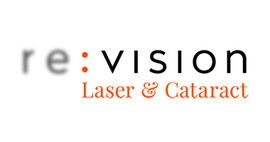Central Auckland, East Auckland, North Auckland, South Auckland, West Auckland > Private Hospitals & Specialists >
Re : Vision Laser & Cataract Centre
Private Service, Ophthalmology
0800 55 2020
Today
8:00 AM to 5:00 PM.
Description
Consultants
-

Dr Simon Dean
Oculoplastics, Oncology, Cataract & Anterior Segment Surgeon
-

Dr Trevor Gray
Specialist Cataract Eye Surgeon (Ophthalmologist)
-

Dr Mo Ziaei
Specialist Cataract Eye Surgeon (Ophthalmologist)
Referral Expectations
For referrers: online referrals or download a referral form here
Hours
8:00 AM to 5:00 PM.
| Mon – Fri | 8:00 AM – 5:00 PM |
|---|
Procedures / Treatments
These conditions cause distance blur. In myopia, the eye has a resting focus at a near distance so that people will be able to see objects clearly at some point close to them, whilst the distance is blurry. Hyperopia also causes distance blur but often does not become noticeable until the eye loses its ability to change focus, frequently in middle age. The loss of focus for near distance (presbyopia or “aged sight”) is also related to a decreased ability to change focus but only affects reading. Astigmatism causes an image to be blurry at all distances, but does not affect clarity of images unless it is severe. An optometrist or ophthalmologist can test for these conditions. Treatment is usually glasses or contact lenses which are only obtainable through an optometrist or dispensing optician. Laser surgery and other corrective surgical techniques can also be used to change the focus of the eye to give clarity of sight in suitable patients.
These conditions cause distance blur. In myopia, the eye has a resting focus at a near distance so that people will be able to see objects clearly at some point close to them, whilst the distance is blurry. Hyperopia also causes distance blur but often does not become noticeable until the eye loses its ability to change focus, frequently in middle age. The loss of focus for near distance (presbyopia or “aged sight”) is also related to a decreased ability to change focus but only affects reading. Astigmatism causes an image to be blurry at all distances, but does not affect clarity of images unless it is severe. An optometrist or ophthalmologist can test for these conditions. Treatment is usually glasses or contact lenses which are only obtainable through an optometrist or dispensing optician. Laser surgery and other corrective surgical techniques can also be used to change the focus of the eye to give clarity of sight in suitable patients.
These conditions cause distance blur. In myopia, the eye has a resting focus at a near distance so that people will be able to see objects clearly at some point close to them, whilst the distance is blurry. Hyperopia also causes distance blur but often does not become noticeable until the eye loses its ability to change focus, frequently in middle age. The loss of focus for near distance (presbyopia or “aged sight”) is also related to a decreased ability to change focus but only affects reading. Astigmatism causes an image to be blurry at all distances, but does not affect clarity of images unless it is severe. An optometrist or ophthalmologist can test for these conditions. Treatment is usually glasses or contact lenses which are only obtainable through an optometrist or dispensing optician. Laser surgery and other corrective surgical techniques can also be used to change the focus of the eye to give clarity of sight in suitable patients.
LASIK (laser-assisted in situ keratomileusis) is a surgical procedure that changes the shape of the cornea (the clear covering of the eye). The cornea can then focus light better on to the retina (the layer at the back of the eye that contains nerve cells that sense light), resulting in clearer vision and reduced need for glasses or contact lenses. The procedure involves cutting a flap in the cornea, removing tiny bits of corneal tissue with a laser and then replacing the flap. Read about laser vision correction at Re: Vision here.
LASIK (laser-assisted in situ keratomileusis) is a surgical procedure that changes the shape of the cornea (the clear covering of the eye). The cornea can then focus light better on to the retina (the layer at the back of the eye that contains nerve cells that sense light), resulting in clearer vision and reduced need for glasses or contact lenses. The procedure involves cutting a flap in the cornea, removing tiny bits of corneal tissue with a laser and then replacing the flap. Read about laser vision correction at Re: Vision here.
LASIK (laser-assisted in situ keratomileusis) is a surgical procedure that changes the shape of the cornea (the clear covering of the eye). The cornea can then focus light better on to the retina (the layer at the back of the eye that contains nerve cells that sense light), resulting in clearer vision and reduced need for glasses or contact lenses.
The procedure involves cutting a flap in the cornea, removing tiny bits of corneal tissue with a laser and then replacing the flap.
Read about laser vision correction at Re: Vision here.
Cataracts are the most common age-related occurrence in eyes. The lens becomes thicker and stiffer and appears yellow and cloudy. Eventually it may turn white, changing the colour of the pupil. A cataract may cause your vision to become fuzzy in a progressive fashion and may also be the cause of disabling glare. Once a cataract affects vision too much, a cataract removal operation is generally advised. This decision is usually made in consultation with an eye specialist. The operation is almost always done under local anaesthetic. Once the cataract has been removed an artificial lens is put in to replace it. It is relatively short in duration and an overnight stay in hospital is not required. Post-operative care consists of eye drops and a check at 1-2 days then after 2-4 weeks. Read more about the cataract procedure at Re: Vision here
Cataracts are the most common age-related occurrence in eyes. The lens becomes thicker and stiffer and appears yellow and cloudy. Eventually it may turn white, changing the colour of the pupil. A cataract may cause your vision to become fuzzy in a progressive fashion and may also be the cause of disabling glare. Once a cataract affects vision too much, a cataract removal operation is generally advised. This decision is usually made in consultation with an eye specialist. The operation is almost always done under local anaesthetic. Once the cataract has been removed an artificial lens is put in to replace it. It is relatively short in duration and an overnight stay in hospital is not required. Post-operative care consists of eye drops and a check at 1-2 days then after 2-4 weeks. Read more about the cataract procedure at Re: Vision here
Keratoplasty (Corneal Transplant): the damaged cornea is removed and replaced with one from a donor. Read more about corneal transplantation here
Keratoplasty (Corneal Transplant): the damaged cornea is removed and replaced with one from a donor. Read more about corneal transplantation here
Keratoplasty (Corneal Transplant): the damaged cornea is removed and replaced with one from a donor.
Read more about corneal transplantation here
Glaucoma is a group of diseases that can damage the eye’s optic nerve and may result in vision loss and blindness. Multiple factors are often important in causing glaucoma, but it is most commonly related to in an increase in pressure in the eye. Symptoms are generally absent until the condition has progressed to an advanced stage. Very occasionally, a rarer form of glaucoma can develop suddenly and symptoms may then include: headaches and aches around the affected eye, seeing halos around lights, sensitivity to light, blurred vision, nausea and vomiting. You may be more likely to develop glaucoma if you: have someone else in your family with glaucoma already have high pressure in your eye have experienced injury to your eye have or have had certain other eye problems have migraine or circulation problems. Glaucoma is more common in people over 50 years of age and more common in women than men. Diagnosis usually comes after consultation with an eye doctor. Signs of glaucoma may also be picked up at an optometrist’s eye examination. The following tests are used to diagnose and monitor glaucoma: Tonometry – measures eye pressure. It is often the first screening test for glaucoma. The eyes are numbed with eye drops and then examined. Dilated eye exam - this is done with an ophthalmoscope (which is a medical instrument that allows the doctor to look through the pupil to the back of the eye).The retina and optic nerve are then examined for any sign of damage. Visual acuity test – test to check distance vision using an eye chart. Visual field test – test to measure side (peripheral) vision. Pachymetry – test to measure the thickness of the cornea. Many other new techniques are emerging to help identify the likelihood of glaucoma and help determine its rate of worsening. Although glaucoma cannot be cured, early treatment can prevent further worsening of the condition and vision loss. Regular eye examinations will need to be continued life-long. Eye drops to decrease eye pressure are the most common early treatment. Surgery may be required, especially if medications are not taking adequate effect. Laser trabeculoplasty, in which a surgeon uses a laser to help the fluid drain from the eye, may be considered in some cases, but has limited effectiveness. More commonly, a trabeculectomy may be performed when other methods have failed to adequately control pressure. This is a medium length operation that makes a new opening for fluid to drain from the eye.
Glaucoma is a group of diseases that can damage the eye’s optic nerve and may result in vision loss and blindness. Multiple factors are often important in causing glaucoma, but it is most commonly related to in an increase in pressure in the eye. Symptoms are generally absent until the condition has progressed to an advanced stage. Very occasionally, a rarer form of glaucoma can develop suddenly and symptoms may then include: headaches and aches around the affected eye, seeing halos around lights, sensitivity to light, blurred vision, nausea and vomiting. You may be more likely to develop glaucoma if you: have someone else in your family with glaucoma already have high pressure in your eye have experienced injury to your eye have or have had certain other eye problems have migraine or circulation problems. Glaucoma is more common in people over 50 years of age and more common in women than men. Diagnosis usually comes after consultation with an eye doctor. Signs of glaucoma may also be picked up at an optometrist’s eye examination. The following tests are used to diagnose and monitor glaucoma: Tonometry – measures eye pressure. It is often the first screening test for glaucoma. The eyes are numbed with eye drops and then examined. Dilated eye exam - this is done with an ophthalmoscope (which is a medical instrument that allows the doctor to look through the pupil to the back of the eye).The retina and optic nerve are then examined for any sign of damage. Visual acuity test – test to check distance vision using an eye chart. Visual field test – test to measure side (peripheral) vision. Pachymetry – test to measure the thickness of the cornea. Many other new techniques are emerging to help identify the likelihood of glaucoma and help determine its rate of worsening. Although glaucoma cannot be cured, early treatment can prevent further worsening of the condition and vision loss. Regular eye examinations will need to be continued life-long. Eye drops to decrease eye pressure are the most common early treatment. Surgery may be required, especially if medications are not taking adequate effect. Laser trabeculoplasty, in which a surgeon uses a laser to help the fluid drain from the eye, may be considered in some cases, but has limited effectiveness. More commonly, a trabeculectomy may be performed when other methods have failed to adequately control pressure. This is a medium length operation that makes a new opening for fluid to drain from the eye.
- have someone else in your family with glaucoma
- already have high pressure in your eye
- have experienced injury to your eye
- have or have had certain other eye problems
- have migraine or circulation problems.
- Tonometry – measures eye pressure. It is often the first screening test for glaucoma. The eyes are numbed with eye drops and then examined.
- Dilated eye exam - this is done with an ophthalmoscope (which is a medical instrument that allows the doctor to look through the pupil to the back of the eye).The retina and optic nerve are then examined for any sign of damage.
- Visual acuity test – test to check distance vision using an eye chart.
- Visual field test – test to measure side (peripheral) vision.
- Pachymetry – test to measure the thickness of the cornea.
ICLs are flexible plastic lenses that augment the natural lens and correct the eye’s refractive - or focusing - issues. They are practically invisible and, once implanted, are designed to continue to do their job for decades. The ICL is customised to the patient's specific visual requirements and can correct shortsightedness, longsightedness and astigmatism.
ICLs are flexible plastic lenses that augment the natural lens and correct the eye’s refractive - or focusing - issues. They are practically invisible and, once implanted, are designed to continue to do their job for decades. The ICL is customised to the patient's specific visual requirements and can correct shortsightedness, longsightedness and astigmatism.
ICLs are flexible plastic lenses that augment the natural lens and correct the eye’s refractive - or focusing - issues. They are practically invisible and, once implanted, are designed to continue to do their job for decades.
The ICL is customised to the patient's specific visual requirements and can correct shortsightedness, longsightedness and astigmatism.
A pterygium is a wholly benign, fleshy tissue growth on the surface of the conjunctiva, the clear tissue that lines your eyelids and covers your eyeball. It typically forms in the corner of the eye closest to your nose and can often extend across the surface of the cornea. There are two ways to treat pterygia depending on their nature, symptoms and size - either eye drops or surgery.
A pterygium is a wholly benign, fleshy tissue growth on the surface of the conjunctiva, the clear tissue that lines your eyelids and covers your eyeball. It typically forms in the corner of the eye closest to your nose and can often extend across the surface of the cornea. There are two ways to treat pterygia depending on their nature, symptoms and size - either eye drops or surgery.
A pterygium is a wholly benign, fleshy tissue growth on the surface of the conjunctiva, the clear tissue that lines your eyelids and covers your eyeball. It typically forms in the corner of the eye closest to your nose and can often extend across the surface of the cornea.
There are two ways to treat pterygia depending on their nature, symptoms and size - either eye drops or surgery.
Keratoconus causes a progressive thinning and weakening of the cornea - the clear front ‘window’ of the eye - leading to blurred or distorted vision.
Keratoconus causes a progressive thinning and weakening of the cornea - the clear front ‘window’ of the eye - leading to blurred or distorted vision.
Keratoconus causes a progressive thinning and weakening of the cornea - the clear front ‘window’ of the eye - leading to blurred or distorted vision.
Online Booking URL
Travel Directions
Directions to 6C Pacific Rise, Mt Wellington, Auckland, 1060:
· Take Exit 438 from the Motorway (SH1)
· When coming from South – turn left into Mt Wellington Highway (6)
· When coming from North – turn right into Mt Wellington Highway (6)
· From Mt Wellington Highway turn right into Sylvia Park Rd (6), then right into Pacific Rise
· We are 6C in the cul de sac with parking under the building.
Public Transport
The Auckland Transport website is a good resource to plan your public transport options.
Parking
There is undercover parking
Pharmacy
Website
Contact Details
6 Pacific Rise, Mt Wellington, Auckland
Central Auckland
8:00 AM to 5:00 PM.
-
Phone
(09) 222 2020 Free phone 0800 55 2020
-
Fax
(09) 222 2021
Healthlink EDI
revision
Email
Website
Book an appointment online here
Find us on Facebook
Book an appointment
6c Pacific Rise
Mount Wellington
Auckland 1060
Street Address
6c Pacific Rise
Mount Wellington
Auckland 1060
Postal Address
PO Box 132337
Sylvia Park
Auckland 1644
Was this page helpful?
This page was last updated at 5:05PM on February 7, 2024. This information is reviewed and edited by Re : Vision Laser & Cataract Centre.

